 La tiamina es una de las vitaminas del grupo B. Es también llamada B1. Nosotros necesitamos tiamina para utilizar los carbohidratos que comemos. La tiamina ayuda a transformar los carbohidratos en energía para el cuerpo. El cuerpo también necesita tiamina para usar algunos de los aminoácidos que componen las proteínas. This 2-page fact sheet was written by R. Elaine Turner y Wendy J. Dahl, and published by the UF Department of Family Youth and Community Sciences, November 2012.
La tiamina es una de las vitaminas del grupo B. Es también llamada B1. Nosotros necesitamos tiamina para utilizar los carbohidratos que comemos. La tiamina ayuda a transformar los carbohidratos en energía para el cuerpo. El cuerpo también necesita tiamina para usar algunos de los aminoácidos que componen las proteínas. This 2-page fact sheet was written by R. Elaine Turner y Wendy J. Dahl, and published by the UF Department of Family Youth and Community Sciences, November 2012.
http://edis.ifas.ufl.edu/fy1342
Tag: Family Youth and Community Sciences Department
Living Well to Keep Your Pressure Down (FCS8690/FY305)
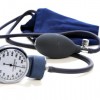 High blood pressure, or hypertension, can cause serious health problems. It makes your heart work harder and can damage your blood vessels even if you feel okay. Everyone should have their blood pressure checked regularly. If you have certain risk factors you are more likely to have high blood pressure. Follow these recommendations to help reduce your risk for high blood pressure. This 6-page fact sheet was written by Linda B. Bobroff, and published by the UF Department of Family Youth and Community Sciences, January 2013.
High blood pressure, or hypertension, can cause serious health problems. It makes your heart work harder and can damage your blood vessels even if you feel okay. Everyone should have their blood pressure checked regularly. If you have certain risk factors you are more likely to have high blood pressure. Follow these recommendations to help reduce your risk for high blood pressure. This 6-page fact sheet was written by Linda B. Bobroff, and published by the UF Department of Family Youth and Community Sciences, January 2013.
http://edis.ifas.ufl.edu/fy305
Healthy Living: Tips for Staying Regular (FCS8565/FY072)
 Constipation means having a bowel movement fewer than three times a week. Stools are usually hard and can be painful to pass. Constipation is common among older adults.This 1-page fact sheet was written by Linda B. Bobroff, and published by the UF Department of Family Youth and Community Sciences, January 2013.
Constipation means having a bowel movement fewer than three times a week. Stools are usually hard and can be painful to pass. Constipation is common among older adults.This 1-page fact sheet was written by Linda B. Bobroff, and published by the UF Department of Family Youth and Community Sciences, January 2013.
http://edis.ifas.ufl.edu/fy072
Designing Educational Programs for Older Adults (FCS2216/FY631)
 This 4-page fact sheet discusses marketing to older adults, location and timing of programs, and how to successfully share information with older adults. Written by Martie Gillen, Carolyn Wilken, and Jenny Jump, and published by the UF Department of Family Youth and Community Sciences, November 2012.
This 4-page fact sheet discusses marketing to older adults, location and timing of programs, and how to successfully share information with older adults. Written by Martie Gillen, Carolyn Wilken, and Jenny Jump, and published by the UF Department of Family Youth and Community Sciences, November 2012.
http://edis.ifas.ufl.edu/fy631
Adapting the Home (FCS2215/FY630)
 This 4-page fact sheet discusses AARP’s 10 basic ideas to increase home safety, how to individualize for each person or activity, how to apply universal design to make homes safer, and assistive devices. Written by Martie Gillen, Pat J. Dasler, and Jenny Jump, and published by the UF Department of Family Youth and Community Sciences, November 2012.
This 4-page fact sheet discusses AARP’s 10 basic ideas to increase home safety, how to individualize for each person or activity, how to apply universal design to make homes safer, and assistive devices. Written by Martie Gillen, Pat J. Dasler, and Jenny Jump, and published by the UF Department of Family Youth and Community Sciences, November 2012.
http://edis.ifas.ufl.edu/fy630
Fall Prevention (FCS2214/FY629)
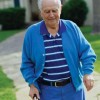 Among older adults (those 65 or older), falls are the leading cause of injury and death. When someone falls, they face long-term disability, lower productivity, and loss of independence. Falls can happen anywhere, but more than half of all falls happen at home. Many of these falls could be prevented by making simple changes in the home. This 3-page fact sheet was written by Martie Gillen, Kristen D. Smith, and Jenny Jump, and published by the UF Department of Family Youth and Community Sciences, November 2012.
Among older adults (those 65 or older), falls are the leading cause of injury and death. When someone falls, they face long-term disability, lower productivity, and loss of independence. Falls can happen anywhere, but more than half of all falls happen at home. Many of these falls could be prevented by making simple changes in the home. This 3-page fact sheet was written by Martie Gillen, Kristen D. Smith, and Jenny Jump, and published by the UF Department of Family Youth and Community Sciences, November 2012.
http://edis.ifas.ufl.edu/fy629
Financial Issues (FCS2212/FY627)
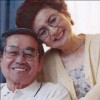 Although we cannot foresee unexpected events, planning can help us control some financial issues that may arise. This 4-page fact sheet highlights the main financial poblems older adults face during retirements, and solutions to help plan and manage a successful retirement. Written by Martie Gillen and Josephine Turner, and published by the UF Department of Family Youth and Community Sciences, November 2012.
Although we cannot foresee unexpected events, planning can help us control some financial issues that may arise. This 4-page fact sheet highlights the main financial poblems older adults face during retirements, and solutions to help plan and manage a successful retirement. Written by Martie Gillen and Josephine Turner, and published by the UF Department of Family Youth and Community Sciences, November 2012.
http://edis.ifas.ufl.edu/fy627
Safe Return (FCS2211/FY626)
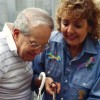 In the United States, more than 10,000 times each year a person with dementia becomes lost in the community and cannot find the way home. The quality of care people receive does not influence the likelihood of people with dementia to become lost. Even people who live in the best caregiving situations can become lost in the community. It can happen to anyone, even if the person does not have a tendency to wander. This 4-page fact sheet looks at why people with dementia become lost, how to prevent this from happening, and identify the best search strategies for finding someone who is lost. Written by Martie Gillen and Meredeth A. Rowe, and published by the UF Department of Family Youth and Community Sciences, November 2012.
In the United States, more than 10,000 times each year a person with dementia becomes lost in the community and cannot find the way home. The quality of care people receive does not influence the likelihood of people with dementia to become lost. Even people who live in the best caregiving situations can become lost in the community. It can happen to anyone, even if the person does not have a tendency to wander. This 4-page fact sheet looks at why people with dementia become lost, how to prevent this from happening, and identify the best search strategies for finding someone who is lost. Written by Martie Gillen and Meredeth A. Rowe, and published by the UF Department of Family Youth and Community Sciences, November 2012.
http://edis.ifas.ufl.edu/fy626
Family Relationships in an Aging Society (FCS2210/FY625)
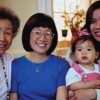 Never in the history of America or the world has the population had more older adults than children. This 5-page fact sheet discusses some issues that happen as a result of having a greater number of older adults than children. It also looks at the roles of the family and intergenerational relationships supporting our aging society. Written by Martie Gillen, Terry Mills, and Jenny Jump, and published by the UF Department of Family Youth and Community Sciences, November 2012.
Never in the history of America or the world has the population had more older adults than children. This 5-page fact sheet discusses some issues that happen as a result of having a greater number of older adults than children. It also looks at the roles of the family and intergenerational relationships supporting our aging society. Written by Martie Gillen, Terry Mills, and Jenny Jump, and published by the UF Department of Family Youth and Community Sciences, November 2012.
http://edis.ifas.ufl.edu/fy625
The Food Groups of MyPlate (FCS8873/FY1077)
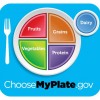 Plan your food group choices wisely. Choose nutrient-rich foods that are fat-free or low-fat and low in added sugars. This 3-page fact sheet gives an overview of the MyPlate food groups. Written by Glenda L. Warren and Jennifer Walsh, and published by the UF Department of Family Youth and Community Sciences, Novemeber 2012.
Plan your food group choices wisely. Choose nutrient-rich foods that are fat-free or low-fat and low in added sugars. This 3-page fact sheet gives an overview of the MyPlate food groups. Written by Glenda L. Warren and Jennifer Walsh, and published by the UF Department of Family Youth and Community Sciences, Novemeber 2012.
http://edis.ifas.ufl.edu/fy1077
Snack Attacks: Be Prepared (FCS8865/FY1020)
 Children may feel hungry or have a “snack attack” right after school each day. Plan ahead and have ready-to-eat healthful foods available for children to enjoy. Use the MyPlate food groups as a guide to prepare snacks that will help children meet their nutritional needs. This 2-page fact sheet was written by Glenda L. Warren and Jennifer Walsh, and published by the UF Department of Family Youth and Community Sciences, November 2012.
Children may feel hungry or have a “snack attack” right after school each day. Plan ahead and have ready-to-eat healthful foods available for children to enjoy. Use the MyPlate food groups as a guide to prepare snacks that will help children meet their nutritional needs. This 2-page fact sheet was written by Glenda L. Warren and Jennifer Walsh, and published by the UF Department of Family Youth and Community Sciences, November 2012.
http://edis.ifas.ufl.edu/fy1020
Saying Goodbye: Military Deployments (FAR0013/FM072)
 “Those last few hugs, the last few kisses, the last few goodbyes are what many military families across the United States have experienced when seeing a loved one leave for deployment. An estimated 1.4 million servicemen and women serve as active duty members in the Army, Navy, Marine Corps, or Air Force. Deployments are nothing new in the military community. However, during these times of separation, family members of those serving, especially the children, undergo many hardships. Studies show children’s reactions to separation can even lead to depression.” This 2-page Family Album Radio transcript was written by Alexandra Ulrich and Suzanna Smith, and published by the UF Department of Family Youth and Community Sciences, November 2012.
“Those last few hugs, the last few kisses, the last few goodbyes are what many military families across the United States have experienced when seeing a loved one leave for deployment. An estimated 1.4 million servicemen and women serve as active duty members in the Army, Navy, Marine Corps, or Air Force. Deployments are nothing new in the military community. However, during these times of separation, family members of those serving, especially the children, undergo many hardships. Studies show children’s reactions to separation can even lead to depression.” This 2-page Family Album Radio transcript was written by Alexandra Ulrich and Suzanna Smith, and published by the UF Department of Family Youth and Community Sciences, November 2012.
http://edis.ifas.ufl.edu/fm072
Healthy Eating: Folate (FCS8567/FY066)
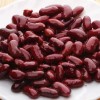 Folate is one of the B vitamins. It is involved in the formation of DNA, the genetic material found in all cells of your body. Folate is an important nutrient for everyone. It is especially important for pregnant and nursing women, growing children, and older adults. Health problems may result if people do not get enough folate. This 2-page fact sheet was written by Linda B. Bobroff, and published by the UF Department of Family Youth and Community Sciences, October 2012.
Folate is one of the B vitamins. It is involved in the formation of DNA, the genetic material found in all cells of your body. Folate is an important nutrient for everyone. It is especially important for pregnant and nursing women, growing children, and older adults. Health problems may result if people do not get enough folate. This 2-page fact sheet was written by Linda B. Bobroff, and published by the UF Department of Family Youth and Community Sciences, October 2012.
http://edis.ifas.ufl.edu/fy066
What Middle Schoolers Want to Talk About (FAR0804/FM246)
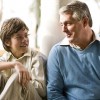 “Can your middle-schooler talk to you? Most 10- to 14-year-olds want a warm, close relationship with their parents. However, only about a quarter of adolescents nationwide find their parents ‘approachable and available to talk.'” This 2-page Family Album Radio transcript was written by Suzanna Smith, and published by the UF Department of Family Youth and Community Sciences, September 2012.
“Can your middle-schooler talk to you? Most 10- to 14-year-olds want a warm, close relationship with their parents. However, only about a quarter of adolescents nationwide find their parents ‘approachable and available to talk.'” This 2-page Family Album Radio transcript was written by Suzanna Smith, and published by the UF Department of Family Youth and Community Sciences, September 2012.
http://edis.ifas.ufl.edu/fm246
Healthy Meal Plans (FCS8750/FY522)
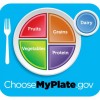 A meal plan is a guide to help you plan daily meals and snacks. It allows you to eat foods you enjoy and that provide a good balance of nutrients for your health. Meal plans can be used by anyone interested in healthy eating. They are very helpful for people who want to manage their weight.This 20-page fact sheet was written by Linda B. Bobroff, and published by the UF Department of Family Youth and Community Sciences, October 2012.
A meal plan is a guide to help you plan daily meals and snacks. It allows you to eat foods you enjoy and that provide a good balance of nutrients for your health. Meal plans can be used by anyone interested in healthy eating. They are very helpful for people who want to manage their weight.This 20-page fact sheet was written by Linda B. Bobroff, and published by the UF Department of Family Youth and Community Sciences, October 2012.
http://edis.ifas.ufl.edu/fy522
Talking to Children about Disasters (FAR8038/FM248)
 “Natural disasters, refugees displaced from their homes, loss of life . . . even for adults, these tragic events are difficult to understand. Children, too, may find these incidents especially troubling. Adults can help young people make sense of disasters and deal with their feelings by following a few guidelines.” This 2-page Family Album Radio transcript was written by Suzanna Smith, and published by the UF Department of Family Youth and Community Sciences, September 2012.
“Natural disasters, refugees displaced from their homes, loss of life . . . even for adults, these tragic events are difficult to understand. Children, too, may find these incidents especially troubling. Adults can help young people make sense of disasters and deal with their feelings by following a few guidelines.” This 2-page Family Album Radio transcript was written by Suzanna Smith, and published by the UF Department of Family Youth and Community Sciences, September 2012.
http://edis.ifas.ufl.edu/fm248
Preventing Childhood Obesity through Physical Activity (FAR8038/FM252)
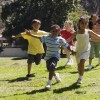 “Many parents are concerned about rising rates of childhood obesity. It’s important to keep a healthy perspective on the situation and not overreact with overly restrictive approaches that can do more harm than good. One way to promote healthy weights in children is to help them to be physically active.” This 2-page Family Album Radio transcript was written by Linda Bobroff, and published by the UF Department of Family Youth and Community Sciences, September 2012.
“Many parents are concerned about rising rates of childhood obesity. It’s important to keep a healthy perspective on the situation and not overreact with overly restrictive approaches that can do more harm than good. One way to promote healthy weights in children is to help them to be physically active.” This 2-page Family Album Radio transcript was written by Linda Bobroff, and published by the UF Department of Family Youth and Community Sciences, September 2012.
http://edis.ifas.ufl.edu/fm252
Bone Health (FAR8039/FM254)
 “When planning your family meals, you probably try to make sure your children get enough calcium and vitamin D, perhaps including a fresh cup of milk. Since milk is full of calcium, vitamin D, and other important nutrients, it’s one of the best foods for building strong bones. People who don’t get enough calcium or vitamin D are at risk for osteoporosis: weak bones that are more likely to fracture.” This 2-page Family Album Radio transcript was written by Jacob Young and Jennifer Hillan, and published by the UF Department of Family Youth and Community Sciences, September 2012.
“When planning your family meals, you probably try to make sure your children get enough calcium and vitamin D, perhaps including a fresh cup of milk. Since milk is full of calcium, vitamin D, and other important nutrients, it’s one of the best foods for building strong bones. People who don’t get enough calcium or vitamin D are at risk for osteoporosis: weak bones that are more likely to fracture.” This 2-page Family Album Radio transcript was written by Jacob Young and Jennifer Hillan, and published by the UF Department of Family Youth and Community Sciences, September 2012.
http://edis.ifas.ufl.edu/fm254
Improving Health and Happiness in the Home by Being an Energy Giver Rather Than an Energy Taker (FCS3313/FY1339)
 One way to improve health and happiness in the home is to work toward becoming an energy giver rather than an energy taker. The first step in doing this is to accept that you have some control regarding the attitude you choose to display during your waking hours. This 3-page fact sheet was written by Randall A. Cantrell and Victor W. Harris, and published by the UF Department of Family Youth and Community Sciences, October 2012.
One way to improve health and happiness in the home is to work toward becoming an energy giver rather than an energy taker. The first step in doing this is to accept that you have some control regarding the attitude you choose to display during your waking hours. This 3-page fact sheet was written by Randall A. Cantrell and Victor W. Harris, and published by the UF Department of Family Youth and Community Sciences, October 2012.
http://edis.ifas.ufl.edu/fy1339
Healthy Eating: Fluids (FCS8569/FY070)
 More than one-half of an adult human body weight is water. Water brings nutrients to the cells in our bodies and removes waste. Our bodies cannot function without an adequate water supply. This 2-page fact sheet was written by Linda B. Bobroff, Luisa Oliver-Cordero, and Emily Minton, and published by the UF Department of Family Youth and Community Sciences, 10. http://edis.ifas.ufl.edu/fy070
More than one-half of an adult human body weight is water. Water brings nutrients to the cells in our bodies and removes waste. Our bodies cannot function without an adequate water supply. This 2-page fact sheet was written by Linda B. Bobroff, Luisa Oliver-Cordero, and Emily Minton, and published by the UF Department of Family Youth and Community Sciences, 10. http://edis.ifas.ufl.edu/fy070